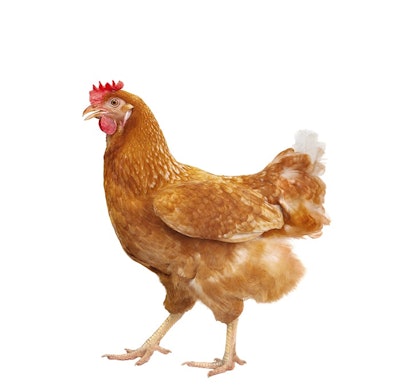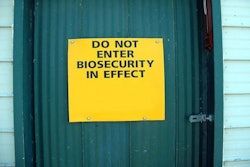
Even though industry experts have determined the U.S.’s current highly pathogenic avian influenza (HPAI) outbreak is spreading by wild bird migration, Dr. Paul Patterson, Pennsylvania State University poultry science professor emeritus, hypothesizes that aerosol transmission could be playing a part in the virus’s spread.
“Vegetative buffers can be useful for some of the air emissions that poultry or other livestock farms produce, such as dust, odors or ammonia. There are plants that like these emissions and can scrub them from the atmosphere, which makes a difference downwind,” said Patterson at 2023 PEAK, a poultry production tradeshow held in in Minneapolis, Minnesota.
Industry experts, research suggests that viruses can be aerosolized
While there is little research documenting how bacteria and viruses are aerosolized, there are anecdotes that suggest this, explained Patterson.
“We know a lot of about structural and procedural biosecurity, but we've really not documented the impact of aerosolized virus particles and what can be done to mitigate that,” he said.
Patterson referenced an anecdote from Diamond V Technical Services Specialist Dr. Eric Gingrich that examined a farm exposed to avian influenza on the outside of a poultry house. He said the virus came through the inlets on one side of a house, and those birds in that area of the house tested positive for HPAI.
“The virus did not really migrate to the rest of the farm. It was the northwest facing wall that took the aerosolized virus into the inlets and infected those birds,” he explained.
Additionally, Patterson cited an Iowa State University research study that examined the role of airborne transmission in windy states, one being Iowa, in the spread of 2015’s HPAI outbreak.
That study found 97% of the HPAI cases in Iowa could have potentially received virus-laden air from previously infected farms in the state. However, the infection risk could be affected by the house’s inlet type, flock size and distance from a previously infected farm.
What should producers do?
“Viruses can be associated with vapor and aerosolized from a bird’s nasal or respiratory system. Viruses could also come from fecal material, aerosolize with the wind and travel long distances,” Patterson said.
If producers have a multi-species vegetative buffer to protect their farm, for example, some with hairy or sticky leaves, these can help trap aerosolized particles. Patterson suggests contacting a local Natural Resources Conservation Services (NRCS) office for recommendations on what vegetation to use.
While vegetative buffers could be beneficial in preventing the spread of HPAI, much more research needs to be conducted, he added.


















